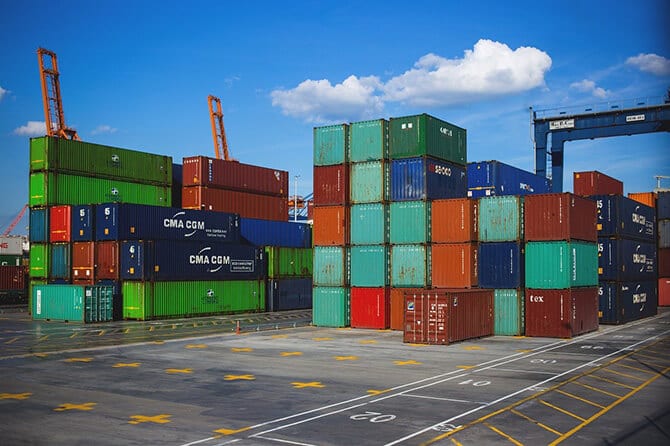
There is always some danger associated with shipping cargo, but when that cargo is valuable, you will want to be extra careful in order to make sure that your valuable items arrive at their destination safely and in one piece. With that in mind, we have created this guide on how to protect valuable and fragile cargo.
Here is what you can do in order to secure your expensive items.
CHOOSING THE RIGHT CONTAINERS
When you are packing for shipping fragile cargo, you will want to use the best shipping equipment possible for the job. You can work together with a specialized logistics company, whose employees have lots of experience and know which equipment is best for packing your specific items.
Then, you need to choose the right packing container. If you need to protect smaller expensive cargo, you can use jiffy bags or polybags. These bags are designed to keep your items safe from the elements, but you will need to be extra careful when handling them. They are light and thus require more patience and a gentle touch.
If you need some additional security for extra fragile items, you can use corrugated cardboard boxes, as they are very tough and durable. You can also use a version of corrugated boxes with double walls, that add an additional layer of security and greatly lessen the chance of deformation. Corrugated cardboard boxes with double walls are especially useful when you need to protect fragile cargo – for example, ceramics or glass.

Corrugated cardboard boxes are a good option if you need to protect larger expensive items
There are various options when it comes to containers. However, if you need to protect fragile items for cargo, one rule always applies. You should only work with new and previously unused containers. While you will save some money when packing with previously used containers, the risk is simply not worth it. Used containers are often not as durable as the new ones. Their physical integrity lessens with every trip. This is particularly true if you are transporting heavier items.
PROTECT FRAGILE CARGO WITH THE RIGHT CUSHIONING
After choosing the right containers, it is time to choose the right cushioning. There are different materials you can use for this purpose. Again, they depend on the items themselves.
If your valuable items are not fragile and the trip will be short, the so-called ‘brown paper’ is very popular in such cases. There is a good reason for this. Brown paper is sturdy and cheap and holds your items in place. It greatly lessens their movement while in transit. Plus, it is very environment-friendly. Theoretically, the so-called ‘packing peanuts’ can do an equally good job, but this material posits a greater threat to the environment.
However, for fragile cargo, it is best to use a different material, especially when it is valuable. Bubble material is a good choice, as it provides adequate protection. Unfortunately, it is more expensive, but the price is well worth it when you need to protect fragile items.
We have already mentioned corrugated cardboard as a good shipping container, but it is also very useful for greatly reducing the impact in terms of two or more packed cargo items. And, because it protects your items from deformation, it is great when you are shipping items that mustn’t get bent during the transport.

Use bubble wrap to cushion and protect valuable cargo
Airbags and foam corners which were preformed will add some extra protection to your items. These bubble wrap materials are designed to keep your cargo safely in place, reducing the chance of damages.
As for the blankets, towels, and similar materials you’ll find at home, remember that you should not use them when you need to protect fragile items. The primary reason to avoid them is because they often compress while in transit. This changes the delicate packing arrangement of your cargo. Finally, while preparing expensive cargo for shipping, it is important to adhere to some general packing guidelines. Doing so will certainly increase the safety of your items.
EMPTY SPACES AND SEALING
Whenever a vehicle hits a bump in the road, no matter how small, your item will move inside the package. So, it is important that your items are surrounded with material on all sides. There should be no empty space around the item. Thus, when packing your cargo, place it at the center of the container and fill in all the empty space. When it comes to large cargo, the optimal method of protection is to secure it to the base before placing it inside a container.

All items on the pallet should be wrapped in plastic.
Then comes the sealing. Forget about string or paper. They are not very safe sealing materials. If you will be transporting pallets, then plastic is a good choice. Use wrapping plastic on each and every cargo item on the pallet individually. The next step is to use heat. This way, the plastic condenses around the items, making sure that they don’t move during shipping. Finally, if you will not be using pallets but boxes or perhaps some bigger envelopes, you will need to acquire some sturdy packing tape.
USE FRAGILE LABELS FOR EXTRA CAUTION
Using fragile labels to ship fragile items is more important than you think. Carriers are more careful when warned of the possibility of content breakage. Also, the receiver will be more careful when there’s a fragile label on the box.
It is generally not recommended that you warn of the contents of the package. All you have to do is indicate that it is fragile. Use an eye-catching color and make sure your fragile label is large and visible.
With our experience in the shipping industry, we know how fragile labels can make a difference in securing the safety and quality of your packages, particularly those with fragile and breakable contents. Using labels to alert handlers to the need for special care can also reduce insurance premiums.
Remember to take the utmost care when transporting goods. You do not know the calamities your shipment may face along the way. In any case, if you need more help packing fragile products, do not hesitate in getting in touch.
CHOOSING THE RIGHT CARRIER
No matter how carefully you packed the cargo, working with the right carrier is still very important. Some of them will be extremely careful with your cargo items, others won’t. When transporting valuable items, it is essential that your carrier places utmost importance on making sure that your items arrive safely and without harm. What’s more, a carrier with the necessary expertise will be able to instruct you and help you with packaging, while providing the specifications related to how the outside of your cargo should be wrapped.
There are also some carriers that can’t or won’t work with certain kinds of fragile cargo. This will depend on its weight, type, or the shipping location. When it comes to the location, the weather there also plays a significant role when you need to protect valuable cargo. Having the necessary information on the weather will allow the carrier to advise you accordingly. Be especially vigilant when it comes to various food items or plant seeds. Some temperatures are likely to endanger them during the process of shipping.
ILS can guide on how to protect valuable and fragile cargo.
Talk to the experts in the department of Transportation & Customer Service!


